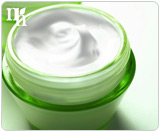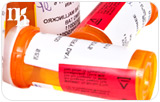
You've heard the expression “beauty is pain,” but what if the steps you take to look good every day were also harmful to your health? In the past few years, more researchers have begun to take a closer look at the ingredients in cosmetics that many people use as part of a daily or weekly beauty regimen. What they have found in some of these studies is disconcerting.
If you're one of those people who inspect shampoo bottles and lotion jars only to find words you don't understand, like butylparaben and phenoxyethanol, then this article is for you. Below, we'll break down some of those impossible to pronounce ingredient names and spell out what they mean for your health.
What's in the Products I Use?
Many beauty products, such as shampoos, lotions, and nail polish, contain chemicals that have the ability to mimic estrogen when ingested. Because these products can be absorbed through the skin, it's easy to be exposed to these chemicals. These beauty products usually contain only trace amounts of phytoestrogens, around 0.5 to two percent, and the research is a continual effort. However, what we already do know now is reason enough to think twice before exposing yourself to these chemicals.
Estrogen-like compounds
Paraben
This compound goes by many names; including methylparaben, ethylparaben, and butylparaben, just to name a few. Where the FDA has concluded that parabens are negligible sources of xenoestrogens, the Organic Consumers Association has a different opinion. Citing a study conducted by the University of Reading, the OCA maintains that parabens share a link to breast cancer because of their estrogen-like properties. Parabens are included in many personal hygiene products, like deodorants, body sprays and creams. [http://www.natural-hormones.net/pics/estrogen-like-compounds.jpg*|*Placenta extract is included in skin creams.]
Placental extract

This ingredient is basically the afterbirth of a human or cow, depending on the manufacturer. The tissue of the placenta is included in many skin creams, promising to provide a “fountain of youth” effect for women who want to avoid wrinkles and crow's feet. It is also used in shampoo to provide nourishment to the hair shaft. Needless to say, placenta contains hormones, including estrogens.
Benzophenones
At first sight, the benzophenones commonly included in sunscreens show weak estrogenic activity. However, when this chemical is exposed to sun rays, it transforms into a more potent estrogen-like substance that stimulates the creation of free radicals in the body.
Mineral oil
Because it is inexpensive, mineral oil is used to soften skin in many lotions and creams. However, due to its estrogenic properties, the U.S. Department of Health and Human Services has labeled this substance as carcinogenic.
Additional Information
Excess estrogen levels over an extended period of time can lead to uterine fibroids and possibly uterine cancer. Click the links below to learn more about estrogen.


